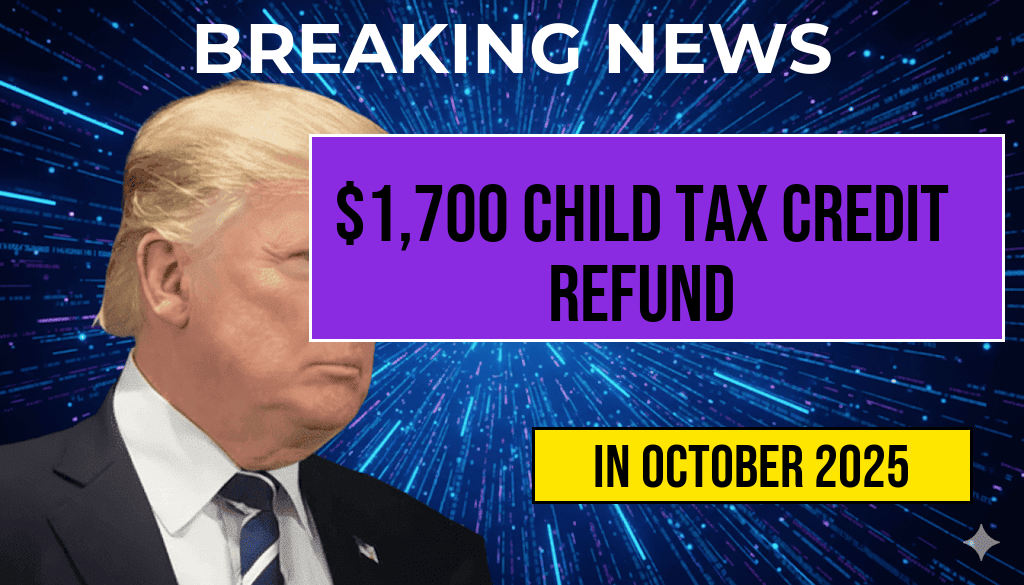The upcoming tax season may present eligible families with a significant financial boost through the Child Tax Credit. Recent updates and ongoing relief measures could allow qualifying households to receive up to $1,700 per child, a substantial increase over previous years. This opportunity is especially relevant for families with children under age 18, as the IRS continues to expand and modify the credit to support economic stability amid ongoing economic uncertainties. While some families have already benefited from advance payments, many others may still be eligible for a lump-sum refund when they file their taxes. Understanding the eligibility criteria, application process, and potential benefits can help families maximize this financial resource during the upcoming tax cycle.
Understanding the Child Tax Credit and Its Recent Changes
The Child Tax Credit (CTC) is a federal benefit designed to reduce the tax burden for families with dependent children. Over the past few years, legislative adjustments have expanded the credit, both in terms of the amount and the way families can access it. The American Rescue Plan Act of 2021 temporarily increased the maximum credit to $3,600 per child under age 6 and $3,000 for children aged 6 to 17, with many recipients receiving advance monthly payments. Although some of these enhanced benefits have phased out, recent extensions and the Build Back Better framework have kept key elements alive, ensuring that millions of families continue to receive substantial support.
Eligibility Criteria and How to Qualify
To qualify for the Child Tax Credit up to $1,700, families must meet specific income and dependency requirements. The main criteria include:
- Child’s age: Under 18 at the end of the tax year
- Relationship: Child must be a son, daughter, stepchild, foster child, sibling, or descendant
- Residency: Child must have lived with the taxpayer for more than half the year
- Income limits: Modified Adjusted Gross Income (MAGI) thresholds apply, typically phasing out at about $200,000 for single filers and $400,000 for married couples filing jointly
Additionally, families must have a valid Social Security number for both themselves and their children to qualify for the full credit. Taxpayers can verify their eligibility and determine the exact amount they may receive using the official IRS Child Tax Credit page.
How Much Can Families Expect to Receive?
The maximum refund amount varies depending on several factors, including income level and the number of qualifying children. For children under age 6, the maximum credit can be as high as $1,700, while for children aged 6 to 17, the maximum is typically lower, around $1,400. The table below summarizes potential refunds based on age groups:
| Child Age Group | Maximum Credit |
|---|---|
| Under 6 years old | $1,700 |
| 6 to 17 years old | $1,400 |
It’s important to note that these amounts can be reduced for higher-income families, with phase-out thresholds starting at $75,000 for single filers and $150,000 for married couples filing jointly. Families with incomes beyond these limits may receive a smaller credit or none at all, depending on their precise financial circumstances.
Maximizing Your Refund and Filing Tips
Taxpayers who believe they qualify should ensure they accurately report their dependents and income information to avoid delays in processing. Using IRS Free File or consulting a tax professional can help optimize the claim process. Additionally, families should review their prior year’s returns to verify if they received the full amount entitled and to identify any missing payments from advance credits.
Key steps for claiming the Child Tax Credit:
- Gather documentation such as birth certificates and Social Security numbers for all dependents
- Ensure accurate reporting of income and dependents on tax forms
- Check for updates or changes to eligibility thresholds each tax year
- Consider using IRS online tools or professional assistance to maximize benefits
Resources and Additional Support
The IRS offers detailed guidance on the Child Tax Credit webpage, including eligibility calculators and FAQs. Additionally, some states and local agencies provide supplemental assistance or tax preparation services tailored to low- and middle-income families. For more information on federal benefits and updates, families can visit reputable sources like Wikipedia or consult trusted financial news outlets such as Forbes.
Frequently Asked Questions
Question
What is the Child Tax Credit and how can I receive a refund of up to $1,700?
Question
Who qualifies for the Child Tax Credit and what are the eligibility requirements?
Question
How do I apply for the Child Tax Credit and when can I expect to receive the refund?
Question
Are there any income limits or other restrictions that affect my eligibility for the Child Tax Credit?
Question
What should I do if I did not receive the full Child Tax Credit amount I am eligible for?

Leave a Reply